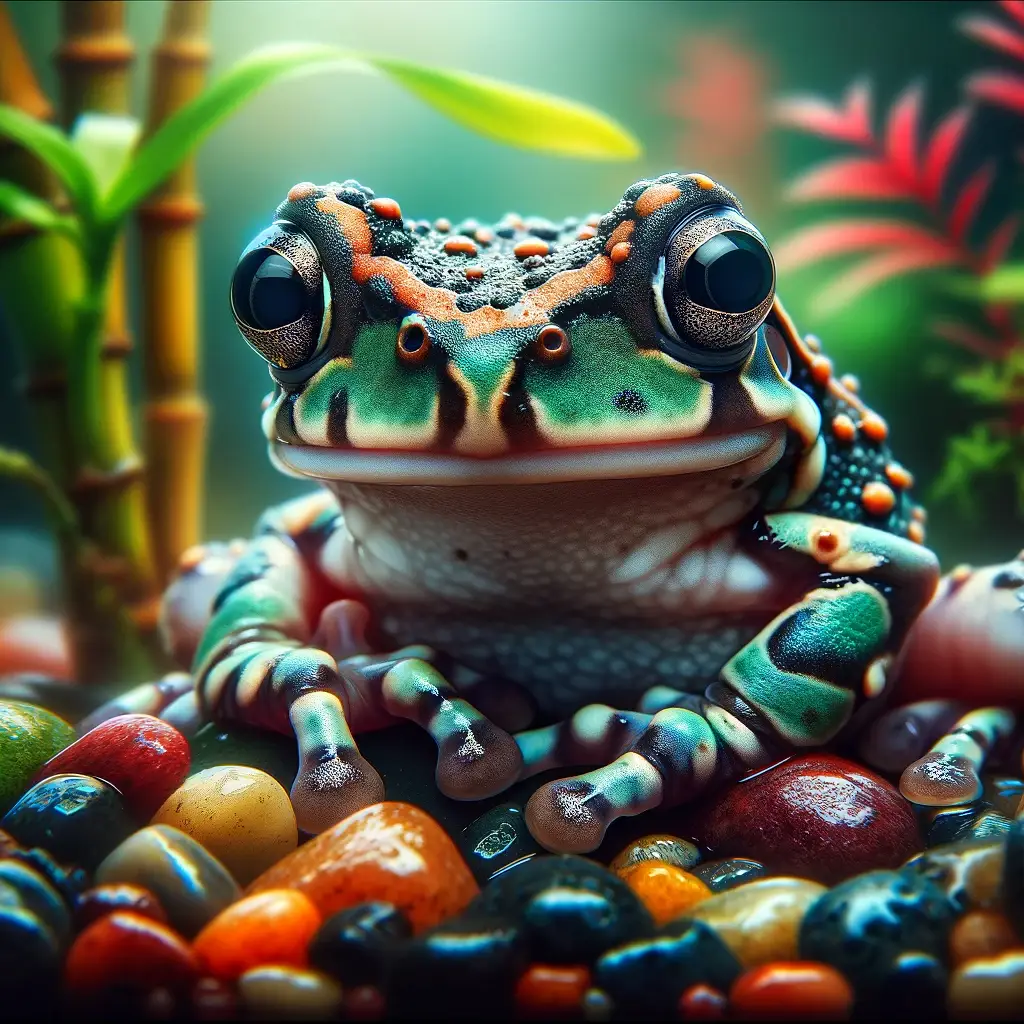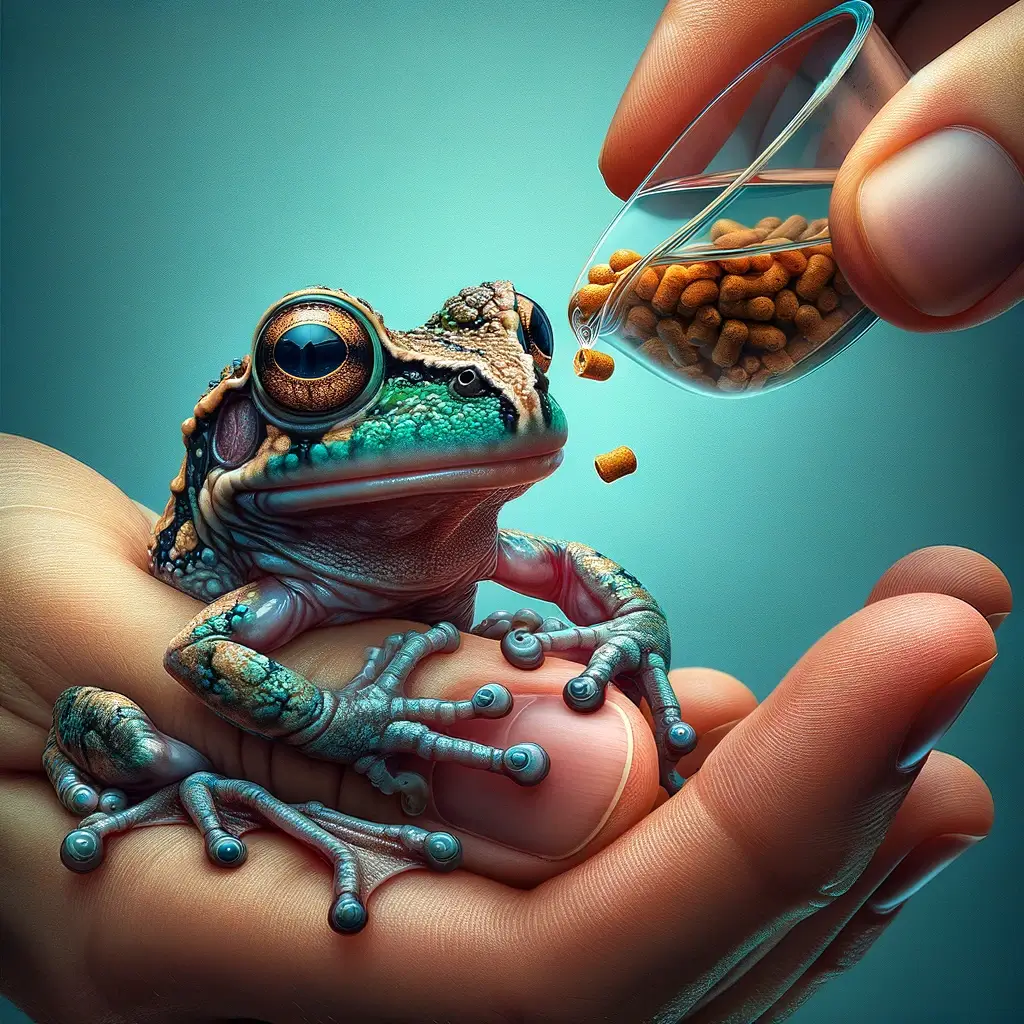
Easy Care Guide for Pet Frogs
Keeping a frog as a pet may seem like a daunting task, but with the right setup, it can be incredibly rewarding and straightforward. Frogs have gained popularity as pets for their minimal care requirements and interesting behaviors. In particular, African Dwarf frogs offer a perfect start for those new to amphibian care.
One of the significant advantages of opting for such setups is the ease of maintenance. These frogs are notably low-maintenance, needing to be fed just twice a week, with two pellets per frog at each feeding. Furthermore, the aquariums require cleaning only once every 2-3 months, a task simplified to removing 3/4 of the water and replacing it with room-temperature bottled spring water. Interestingly, the small size of the tanks, often a concern for many, actually contributes to the frog’s longevity, offering them protection from predators they would face in the wild. This controlled environment can extend their lives up to six years, a significant increase from their typical one-year lifespan in nature.
The simplicity of their care and the long life span they enjoy in captivity make African Dwarf frogs an ideal choice for both experienced pet owners and those new to pet care. In this guide, we’ll explore further how to maintain the perfect environment for your pet frogs and ensure they lead happy, healthy lives as part of your family.
FAQs About Pet Frogs
Are you considering getting a frog as a pet? Here are answers to some frequently asked questions about pet frog care that might help you make an informed decision.
- What Do Pet Frogs Eat?
African Dwarf frogs are typically fed specially formulated pellets, suitable for their diet. Each frog should be given two pellets, twice a week. It’s crucial to stick to this feeding schedule to avoid overfeeding and potential health issues.
- How Often Should I Clean My Frog’s Aquarium?
The aquarium requires a cleaning every 2-3 months. This involves removing 3/4 of the water and replacing it with room-temperature bottled spring water. There’s no need to remove the frogs during this process.
- Can Frogs Live in Small Aquariums?
Yes, contrary to some concerns, small aquariums can actually be beneficial for African Dwarf frogs. These limited spaces protect them from potential predators, contributing to a longer lifespan in captivity—up to six years.
- Are Frogs Good Pets for Beginners?
African Dwarf frogs are excellent pets for beginners due to their simple care requirements. They need to be fed only twice a week, and the aquarium maintenance is minimal, making them a manageable pet for first-time owners.
- Is It Safe to Have Frogs Around Children?
Generally, frogs are safe to have around children as they are enclosed within their aquariums. However, it’s essential to teach kids not to handle the frogs without supervision, as frogs can carry salmonella and other bacteria harmful to humans.
- What Is Included in a Starter Aquarium Kit for Frogs?
Starter kits typically include two African Dwarf frogs, multi-colored rocks, and a bamboo plant. This setup not only provides a comfortable habitat for the frogs but also creates an aesthetically pleasing addition to your home.


African Dwarf Frogs Fun Facts
When it comes to owning pet frogs, African Dwarf frogs are among the top choices for families and beginner pet owners. Their popularity stems from their ease of care and quirky behavior. Here are some fun facts that highlight why these amphibians are fascinating pets:
- African Dwarf frogs can hold their breath for 15 minutes to 5 hours! While they live underwater, they need to surface to breathe air because they have lungs, not gills.
- These frogs are fully aquatic but because they need to breathe air, they can often be seen making quick trips to the water’s surface.
- Unlike many other amphibians, African Dwarf frogs are almost entirely aquatic, only leaving the water if their tank is not adequate or by mistake.
- These frogs communicate with each other through vocalizations. They produce a distinctive buzzing or humming sound which is often a sign of happiness or an attempt to attract a mate.
- African Dwarf frogs shed their skin about once a week. Don’t be alarmed if you see this – it’s a normal part of their health regimen. They often eat the shed skin to regain valuable nutrients.
- Despite their small size, African Dwarf frogs can live up to six years in a well-maintained aquarium—a significant leap from their one-year life expectancy in the wild due to predators.
- These frogs have a unique feeding behavior; they don’t have tongues to snag food out of the water, so they use a quick motion to stuff food into their mouths using their front feet.
Many parents have found these small tanks to be the perfect solution for children eager to take care of a pet. The fact that African Dwarf frogs require feeding only twice a week and the aquarium cleaning every 2-3 months makes them an ideal low-maintenance pet. Furthermore, the concern that the small size of the tank might be harmful is debunked by the increased lifespan these frogs enjoy when living in such controlled environments.

Creating the Ideal Frog Habitat at Home
Creating a suitable home for pet frogs is key to their health and happiness. Here’s what you need to know about setting up their habitat:
| Component | Description |
|---|---|
| Frogs Included | 2 African Dwarf Frogs |
| Habitat | Small tank with multicolored rocks and a bamboo plant |
| Feeding | Feed twice a week, two pellets per frog |
| Cleaning | Every 2-3 months, replace 3/4 of the water with room–temperature bottled spring water |
| Benefits | Increased lifespan in captivity, up to six years |
By following these guidelines, pet owners can ensure their frogs have everything they need. The small size of the tank, while a concern to some, actually benefits the frogs by protecting them from predators and extending their lifespan beyond what they would have in the wild. The ease of feeding and tank maintenance further contributes to making African Dwarf frogs an ideal pet, especially for beginners or those seeking a low-maintenance companion.
Beginner Guide to Raising Quail at Home
What are the Signs of a Dog Concussion?
What Causes Your Dog’s Ears to Smell Bad?
When your dog’s ears start to emit an unpleasant odor, it might leave you puzzled…
Methimazole Treatment for Cat Hyperthyroidism
Methimazole plays a crucial role in managing feline hyperthyroidism, a condition marked by an overactive…
Got Hummingbirds in your Backyard? Here’s How to Care for Them.
Why Does Your Cat Pee Outside the Litter Box?
Cat’s Litter Box Issues It’s not uncommon for cat owners to face the frustrating dilemma…




